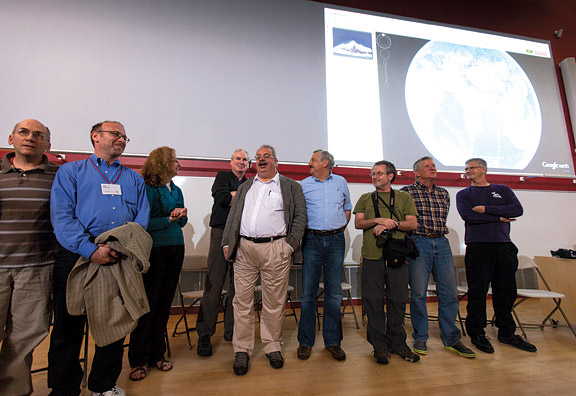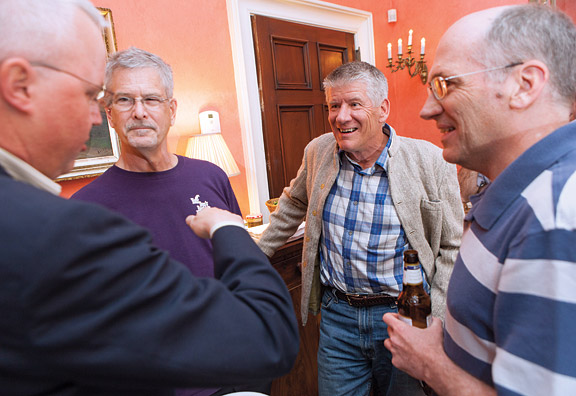In May 1978, thirty-three Brown students, faculty, and staff flew to India to climb the country’s second highest mountain, Devistan. Over reunion weekend this May, twenty-five of those climbers returned to Providence, giving a public forum on the journey that they described as the essence of their education.

Frustrated that students weren’t grasping the true nature of the subject in the class readings, Mutch persuaded his academic bosses to let him teach a group experientially. Then he set the students loose to plan the trip to Devistan.
At the forum, Rebecca Moore ’77, who runs Google Earth Outreach (the company’s nonprofit arm), created a picture of the narrative using new software that allowed her to circle the globe and then zoom in on Providence, where Mutch and his students spent two years planning the trip; New Hampshire, where they practiced ice climbing; New Delhi, where their luggage was waylaid by customs; and finally the gorge through which they approached Devistan. Along the way she interspersed old snapshots of the landscape and of shaggy-looking students wearing heavy jeans and hand-knit sweaters in those days before high-tech climbing clothes.

Shattered, the group spent several days in a meadow they described as paradise. They decided to regroup and continue. Twenty-five of them made it to Nanda Devi, the peak. Braman read from a letter he had written to his then-fiancée, describing the summit as a “divide between reality and mirage.” He continued, “It seems like a miracle if you get this letter.” She did.
The alumni described Mutch as “the embodiment of the New Curriculum,” and a mentor who gave them the freedom to make the trip their own. His daughter and grandson were in the audience at the forum.





